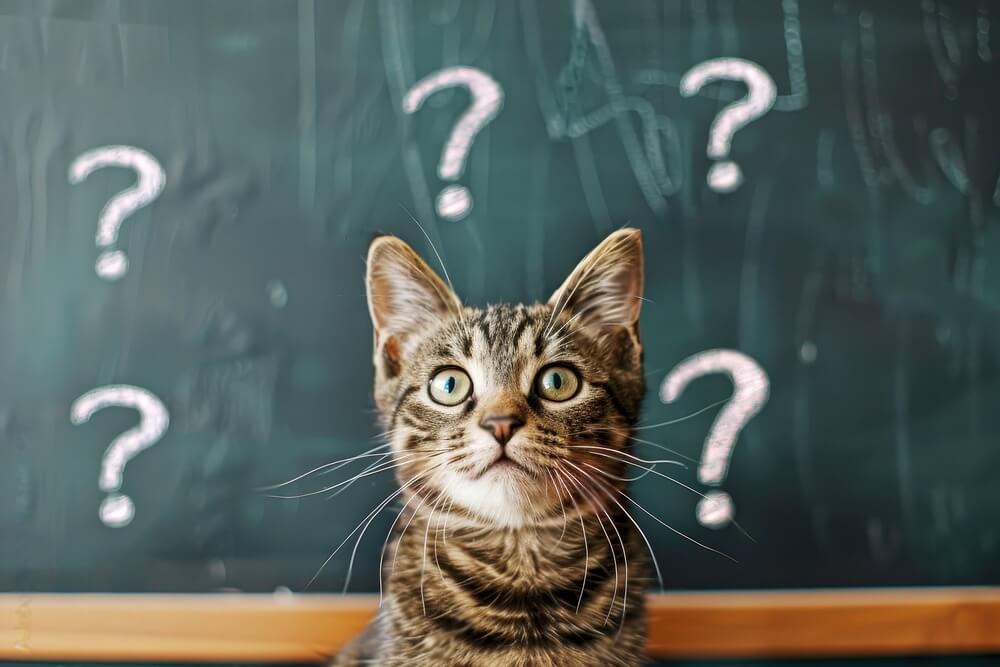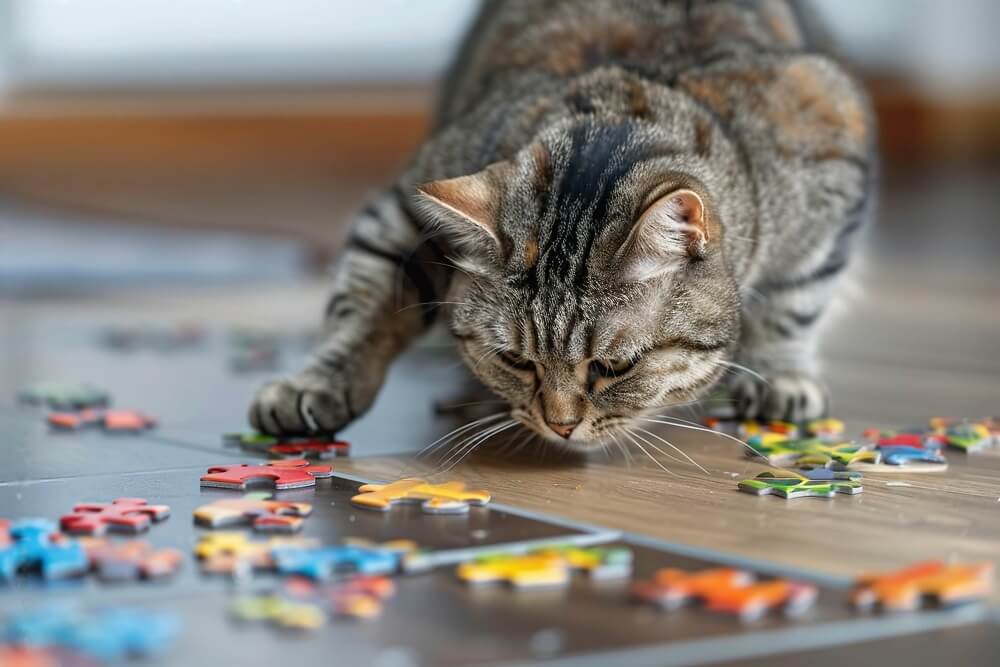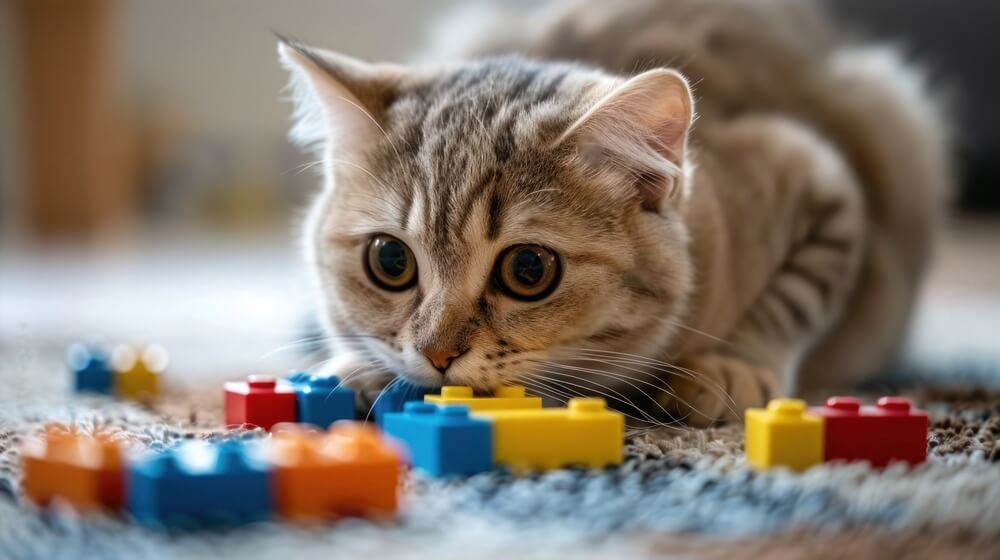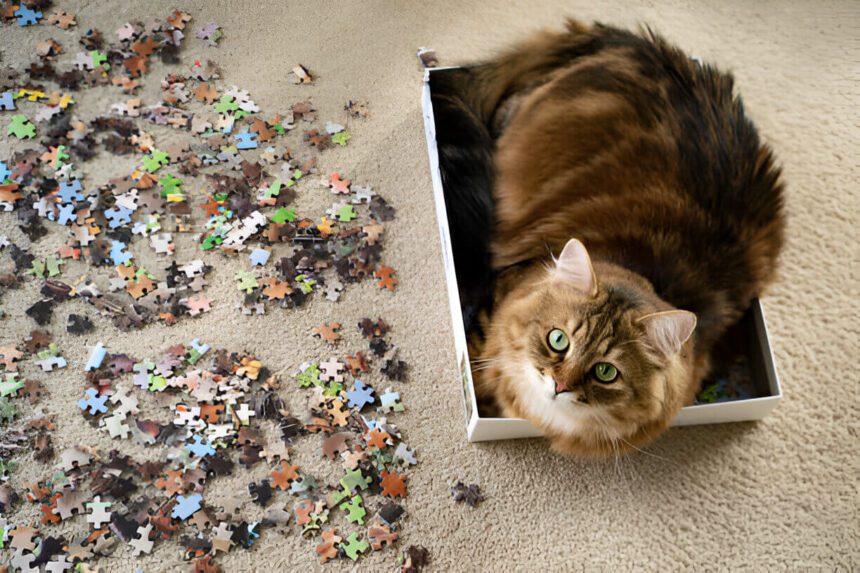Alright folks, let’s get into this pawsome topic that’s bound to drive your cat wild with curiosity—how to do puzzles with cats. Now, I know what you’re thinking—”Puzzles? With my cat?” But trust me, it’s a thing, and it’s a great way to keep your furball entertained, mentally sharp, and maybe even a little less prone to tearing up your furniture. So, grab your catnip, your kitty, and let’s dive into the world of feline puzzles!
Why Bother with Puzzles for Cats?

Let’s be real—cats are curious little creatures. They’re natural-born hunters, always on the lookout for the next challenge or adventure. Puzzles are a fantastic way to channel that energy into something constructive. No more claw marks on your sofa or shredded toilet paper rolls. Plus, puzzles help your kitty exercise their brain, which is super important for keeping them sharp as they age. And let’s face it, watching your cat figure out a puzzle is just downright adorable.
How to Do Puzzles with Cats: What You’ll Need
Before we dive into the puzzle madness, let’s get you prepped up with the essentials. Here’s what you need to kick off your kitty puzzle adventure:
- Treats or kibble: This is the bait, people. Your cat’s going to need a reason to play along, and treats are the purrfect motivation.
- Puzzle toys: These can be store-bought or DIY. The key is to find something that challenges your cat but doesn’t frustrate them to the point of giving up.
- A bit of patience: Cats aren’t always quick learners. They might need a little time to figure things out, so be patient and keep it fun.
Types of Puzzles Your Cat Will Love

So, there are a ton of different puzzles out there, but let’s focus on the ones that will get your kitty’s whiskers twitching.
Food Puzzles
Cats and food—it’s a love story as old as time. Food puzzles are a great way to combine their love of eating with a little mental stimulation.
- DIY Muffin Tin Puzzle: This one’s super easy. Take a muffin tin, drop a few treats in the cups, and then cover each cup with a tennis ball or crumpled piece of paper. Your cat will have to figure out how to move the balls to get to the treats. Simple, but effective.
- Commercial Puzzle Feeders: If you’re not the DIY type, you can find puzzle feeders online or at your local pet store. These come in all shapes and sizes, from rolling balls that dispense treats as they move to more complex contraptions where your cat has to move pieces around to get to the food.
Interactive Puzzles
These are puzzles where you and your cat can play together – perfect for bonding time.
- Fishing Rod Toys: Attach a little puzzle or toy at the end of the string. Your cat will have to figure out how to catch the “prey”. You can make this harder by moving the toy around or hiding it under a blanket.
- Treat Mazes: Create a little maze on the floor using objects around your house – like books or boxes. Place treats at different points in the maze and watch your cat navigate through to find them.
Hide and Seek Puzzles
These puzzles tap into your cat’s hunting instincts. They’re all about searching and pouncing, which most cats absolutely love.
- Treat Hideaways: Hide treats around the house or under blankets. Your cat will have to sniff them out and figure out how to get to them. Start simple, and then make it more challenging as they get the hang of it.
- Puzzle Boxes: You can buy or make a puzzle box with holes in it. Place a toy or treat inside, and your cat will have to reach in and fish it out. It’s like kitty whack-a-mole, but way more fun.
Tips for a Successful Puzzle Session

Alright, so you’ve got the puzzles and the treats – now what? Here’s how to make sure your kitty gets the most out of their puzzle time.
Start Slow
If your cat is new to puzzles, don’t throw them into the deep end right away. Start with something simple that they can figure out easily. You want to build their confidence before moving on to more challenging puzzles. Think of it like training wheels for their brain.
Keep It Positive
Positive reinforcement is key here. Whenever your cat figures out a puzzle or makes progress, give them lots of praise—and, of course, a treat. This will keep them motivated and make the whole experience enjoyable for them.
Don’t Overdo It
While puzzles are great for mental stimulation, you don’t want to overwhelm your cat. Keep sessions short and sweet, especially in the beginning. If your cat starts to look frustrated or loses interest, it’s time to take a break. Remember, this is supposed to be fun for them, not a chore.
Mix It Up
Cats can get bored easily, so it’s important to mix up the puzzles and keep things fresh. Try rotating through different types of puzzles or adding new ones to the mix. The more variety, the better.
Why Puzzles Are Great for Bonding
One of the best things about doing puzzles with your cat is the bonding time. Cats might seem independent, but they actually crave interaction with their humans—on their terms, of course. Puzzles give you a chance to engage with your cat in a way that’s fun for both of you. Plus, it’s a great way to build trust and strengthen your relationship.
Common Puzzle Pitfalls and How to Avoid Them
Like anything, there are a few common mistakes people make when introducing puzzles to their cats. Let’s avoid those, shall we?
Too Hard, Too Fast
One of the biggest mistakes is starting with puzzles that are too difficult. If your cat struggles too much, they might lose interest altogether. Start with something easy and gradually increase the difficulty as they get the hang of it.
Not Enough Motivation
If your cat isn’t super motivated by food, puzzles might be a tough sell. Try using different types of treats or even their regular kibble to see what gets them going. Some cats are more motivated by play than food, so you might need to experiment a bit.
Ignoring Your Cat’s Preferences
Every cat is different. Some might love food puzzles, while others couldn’t care less. Pay attention to what your cat enjoys and tailor the puzzles to their preferences. If they love to hunt, focus on puzzles that tap into that instinct. If they’re more into toys, find puzzles that incorporate their favorite playthings.
DIY Puzzle Ideas for the Crafty Cat Parent
Feeling crafty? Here are a few DIY puzzle ideas that you can whip up at home without spending a dime.
Toilet Paper Roll Maze
Save those toilet paper rolls! Glue them together in a maze-like pattern, then hide treats or toys inside. Your cat will have a blast figuring out how to get to the goodies.
Paper Bag Surprise
Take a paper bag, toss in a few treats or toys, and scrunch it up. Your cat will love the crinkly sound and the challenge of getting to what’s inside. Just make sure to supervise so they don’t eat any paper.
Box of Fun
Cats love boxes—it’s a fact. Take a shallow box and cut a few holes in the top. Place treats or toys inside, and let your cat fish them out through the holes. It’s simple but super entertaining.
How Puzzles Benefit Your Cat’s Health
Alright, so we’ve talked about how fun puzzles can be, but did you know they’re actually good for your cat’s health too? Here’s how.
Mental Stimulation
Just like humans, cats need to keep their brains active. Puzzles are a great way to provide that mental stimulation. It keeps them sharp, reduces the risk of cognitive decline as they age, and can even help prevent boredom-related behaviors like scratching or over-grooming.
Physical Exercise
Depending on the puzzle, your cat might get a bit of a workout too. Chasing a puzzle toy around or batting at treats inside a maze can help keep them active, which is especially important for indoor cats who might not get as much exercise as their outdoor counterparts.
Stress Relief
Believe it or not, puzzles can help reduce stress in cats. The mental and physical activity can help them burn off excess energy and reduce anxiety. Plus, the sense of accomplishment they get from solving a puzzle can boost their confidence.
Troubleshooting Puzzle Problems
If your cat’s not into the puzzles, don’t panic. Here are a few troubleshooting tips to get them on board.
Not Interested in Treats
If your cat’s not super food-motivated, try using a toy as the reward instead of a treat. You can also try using a different type of treat—something smelly or extra special that they don’t get very often.
Getting Frustrated
If your cat seems frustrated, take a step back and try something easier. Remember, puzzles are supposed to be fun. You can always go back to the more challenging puzzles later.
Losing Interest Quickly
If your cat loses interest quickly, try shortening the puzzle sessions. Keep it short and sweet, and end on a high note before they get bored. You can also try mixing up the puzzles to keep things interesting.
Conclusion
And there you have it—the ultimate guide on how to do puzzles with cats. Whether you’re looking to keep your cat entertained, mentally sharp, or just want to bond over something fun, puzzles are a purrfect option. Remember, start slow, keep it positive, and most importantly, have fun! Your cat might not become a puzzle master overnight, but with a little patience and creativity, you’ll both be enjoying puzzle time in no time. So go ahead, grab those treats, and let the puzzle fun begin!



